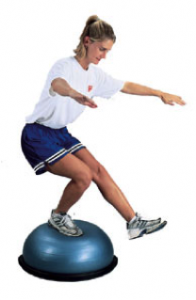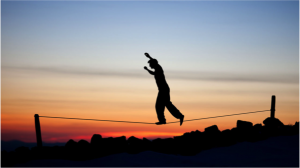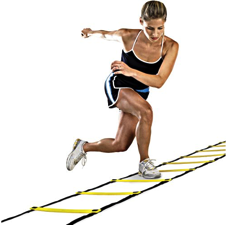Posture and Poise, but what about Prevention?
Figure skating is a sport well known for its combination of artistry and athleticism. While the goal of a skater is to make his or her skills look as seamless as possible, a lot of the focus in training is repetition, repetition, repetition, strict posture training, and smiling through the discomfort. These elements of training are very important for skaters to achieve their fullest potential of such intricate and complex skills. At the same time, a focus on a complete and balanced off-ice training program will not only help a skater improve on-ice skills, but will also help prevent those pesky repetitive injuries.
Current research suggests that a skater should balance his or her on-ice training with the five following off-ice elements.
1) Core Training
A strong core is the staple of all injury prevention. At the centre of your body from which your legs and arms move is the collection of the muscles including the abdomen, spine, hips and pelvis.
Development of a strong core first begins with learning to engage certain muscles in a proper order and sequence. When proper awareness has been developed of the core musculature, then you can challenge the skater with dynamic and challenging positions (planks, roll outs, theraband exercises). This sequence is key not only to protect the spine, but also to learn proper alignment of the hip-knee-ankle complex.
2) Motor control
Did you know that our joints are laced with ligaments not only to provide stability, but to also tell the brain where our joint (ex. knee or ankle) is in space? The movements we create with our body are due to a strong interaction of the nervous system (brain, spinal cord, and nerves), muscles, ligaments, tendons and bones.
In order for a skater to develop the complex skills (jumps, spins, footwork) on the ice, he or she needs to develop a higher level of awareness (both conscious and unconscious) of his/her body positions. This can be done by training the motor system (muscles, nerve and bones) through progressing simple activities (ie. balance, running, skipping, hopping) in different environments (ie. indoors, outdoors, flat surface, soft surface, etc). With this training, it is extremely important to maintain proper body alignment and joint alignment as developed in the earlier stages of motor control training.
3) Balance
One specific aspect of motor control training is balance. Skaters constantly balance on one foot in many different speeds, angles of body lean, and directions of motion. In order to improve postural control, a skater needs to train postural control. Kovacs et al. (2004) measured the difference in balance control of those who took part in a progressive off-ice balance training program and those who took part in traditional off-ice program (stretches and strengthening), and they noted a significant higher balancing ability of those in the balance training group. It goes to show that specific training can have very positive effect on a skater’s development of athletic skills.
4) Agility
Every skaters favorite challenge: footwork! Well, the amount of joy with footwork depends on the level of agility or quick feet that a skater has developed in his or her early years. Agility is one of the higher levels of off-ice training and requires coordination, explosive start, fast stopping and change in directions. Since the onset of the Code of Points system in figure skating, skaters need to pay more attention to their edge quality and footwork. An off-ice program of agility drills through footwork patterns will train a skater to move quicker and more explosively, while maintaining his/her joints in a safe and optimal position.
5) Plyometrics
Plyometrics is the explosive and strength-building aspect of off-ice training. “Plyos” involve engaging maximal force of muscles in a very short time span (F-Marc 2008). Plyos involve moving through exercises that closely mimic the skater’s on-ice skills with the strongest muscle contractions and in the most precise and correct postural alignment. This type of training program needs to be carefully tailored and monitored by a trained professional; After all, plyo training needs to be balanced with the amount of on-ice jumping that a skater performs within the week. Prevention of over-training or muscle strains should always be the main focus on off-ice training programs.
All of these five aspects of off-ice training prepare figure skaters for the dynamic and strenuous nature of figure skating training and performance. With proper core activation and motor control, a skater can progress to more dynamic and challenging exercises of balance, agility and plyometrics. This will provide a stronger base from which to prevent repetitive strain injuries and progress athletic abilities in jumping, footwork, spinning and stroking. Not only will this variety of exercises benefit an athlete’s development, but it will also keep the skaters engaged and having fun throughout their years of becoming a masterful artist and athlete.
Teri McTavish MPT
F-MARC. 2008. FIFA 11+ Manual. Retrieved on February 8, 2016 from http://f-marc.com/11plus/manual/





